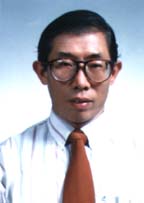Submitted by zhenliang on

In Buddhism one cannot make significant spiritual progress without meditating. There are actually two types of Buddhist meditation.
In the beginning, meditation requires so little. All you have to do is to stop doing whatever else you are doing and just be there. Meditation is a matter of focusing and calming the mind. Later it develops much more into panoramic awareness meditation have been taught, to begin by breathing in through the nose, concentrating on the feeling sensation of air coming in through the nostrils, then breathing out through the nostrils-again while concentrating on the feeling sensation of air going out of the nostrils. Simply observe breathing and focus on nothing else. If you have a physical sensation- a cramped foot, an itch on your shoulder – try to let it go and focus on the breathing.
However, with effort, mindfulness and concentration, meditation will work for even the most unruly mind. You don’t have to go to Tibet or Nepal to find something to meditate.
As the Zen master Dogen once wrote:
To study the Buddha’s way is to study the self;
To study the self is to transcend the self;
To transcend the self is to be enlightened by all things;
To be enlightened by all things is to remove the barrier between self and others.
There are two kinds of meditation – Concentration meditation and Insight meditation.
(1) Concentration meditation can help the practitioner reach the highest mystic states. Right concentration is based on relaxation and to focus our energy and attention and to quiet the heart, mind. It has also been shown to be extremely helpful for stress reduction, tension management and other health related problems.
(2) Insight meditation developed and taught by the Buddha, this type of meditation is often called Vipassana. It is how practitioner develops deeper wisdom and insight into the nature of reality. It cultivates mindfulness and awareness, bringing about the spiritual realization while uprooting negative karmic conditioning and klesha thus bringing purity and peace of heart along with freedom of the mind. Insight meditation is the path to enlightenment, and has been called the heart of the Buddhist meditation. In the non-dual teachings of Mahamudra and Dzogchen, it is often called the higher Vipassana or higher vision of panoramic awareness. The combination of concentration and penetrating insight is the method the Buddha was practicing when he realized the ultimate truth and attained perfect liberation beneath the bodhi tree at dawn in the wilderness of Northern India. He Buddha said: “There is no way to happiness and peace. Happiness and peace is the way.”
Thousands of Theravada Buddhists have in recent years taken up meditation and have no doubt benefited greatly. When one has acquired some experience in meditation the spirit of dhamma makes you realize your defects…for you to adopt your own system of meditation is to overcome those defects. The world we live in is empty of meaning and an awareness of this truth will allow us rebirth. While meditating, we let go of all our definitions of life and we break free.
In Sri Lanka during the troubled centuries (sixteenth to eighteenth) the tradition of meditation was preserved unbroken, when the ordination tradition was lost in Sri Lanka and had several times to be renewed from Burma and Thailand; but via those two countries, which had received Theravada Buddhism from Sri Lanka, it probably can claim a tradition continuous since antiquity. In both Burma and Thailand where lay meditation has become very popular today. At his center near Kandy the Ven. Ananda Maitreya has meditation taught to foreigners in a large part by a monk of American origin. Bechert and Obeyesekere have amply shown the importance of Don David Hevavitarana (1864-1933) who became famous under his assumed title and name Anagarika Dharmapala became probably the first Buddhist to learn meditation from a book rather than a master. In 1890 he found in an old Buddhist temple a medieval text on meditation which he studied and ultimately caused to be published. He practiced meditation on the basis of this study. Thus and old book could appear more authentic than a living teacher.
Simon Leong
The author has written several books on the subject of Buddhism and Yoga, and is currently looking for sponsors to help publish his books. If you would like to be a sponsor, please call Bro. Hong Yew Chye at (6)04-6414822 Ext: 2003 or email ychong@thanhsiang.org
--------------------------------------------------------------------------------
About the Author
A Malaysian poet Simon Leong is a Charter Lifetime member of the International Society of Poets. In November 1, 1996 he was elected into the International Poetry Hall of Fame, Owing Hills, MD, on the Internet World Wide Web, which will be on permanent display in the Museum as the premier showcase for poetic talents ( http://www.poets.com/SimonLeong.html ) & included in Listing of Asian-American Poets: Choy-Yin Leong, Simon birth 1938: //www.rothpoem.com/listasia.html
He received a Decree of International Letters of Cultural Achievement, LFABI, USA. He said, “ A poet is a person who has accepted the study of poetry to a certain degree with passion and insight not only as a writer but also a reader. A retired Stanchart banker, he holds Diplomas in Sales Management, Marketing Analysis and Accounting besides Freelance Journalism and English. He is a free scholar of the International Buddhist University, Thailand and earned his Bachelor of Arts first degree in 2002.
“A Discourse in Buddhism,” this book attempts to satisfy the needs of the student who is preparing for an examination of Diploma level, or who wishes to deepen his knowledge on Buddhism even though he may not be taking an examination. His writings include, “As I See the World Today” published by Vantage Press, NY, 1994; “We are the World”, 1997, and “Save Our World”,2000 both are by Windsor Associates, CA, USA.

